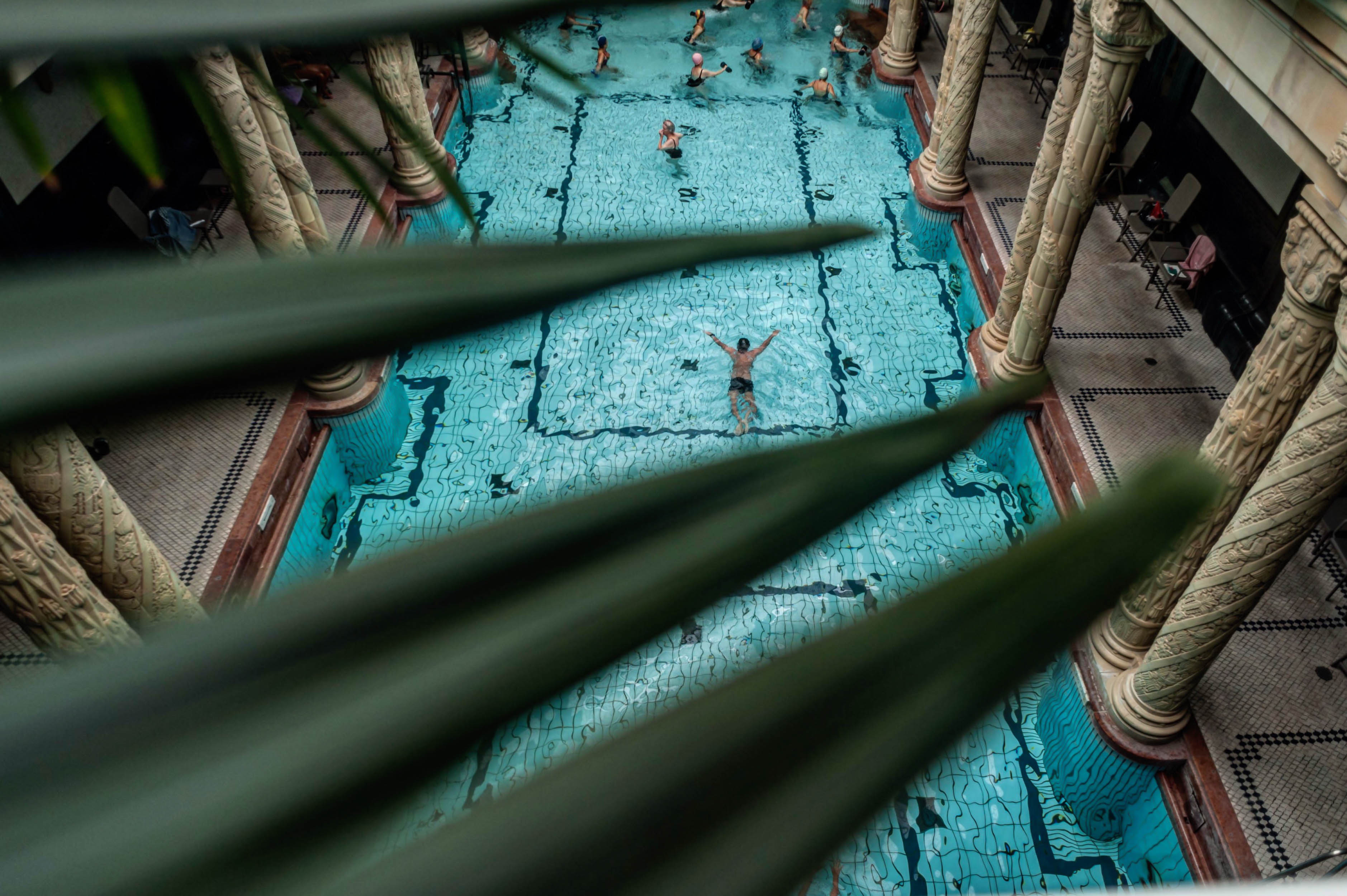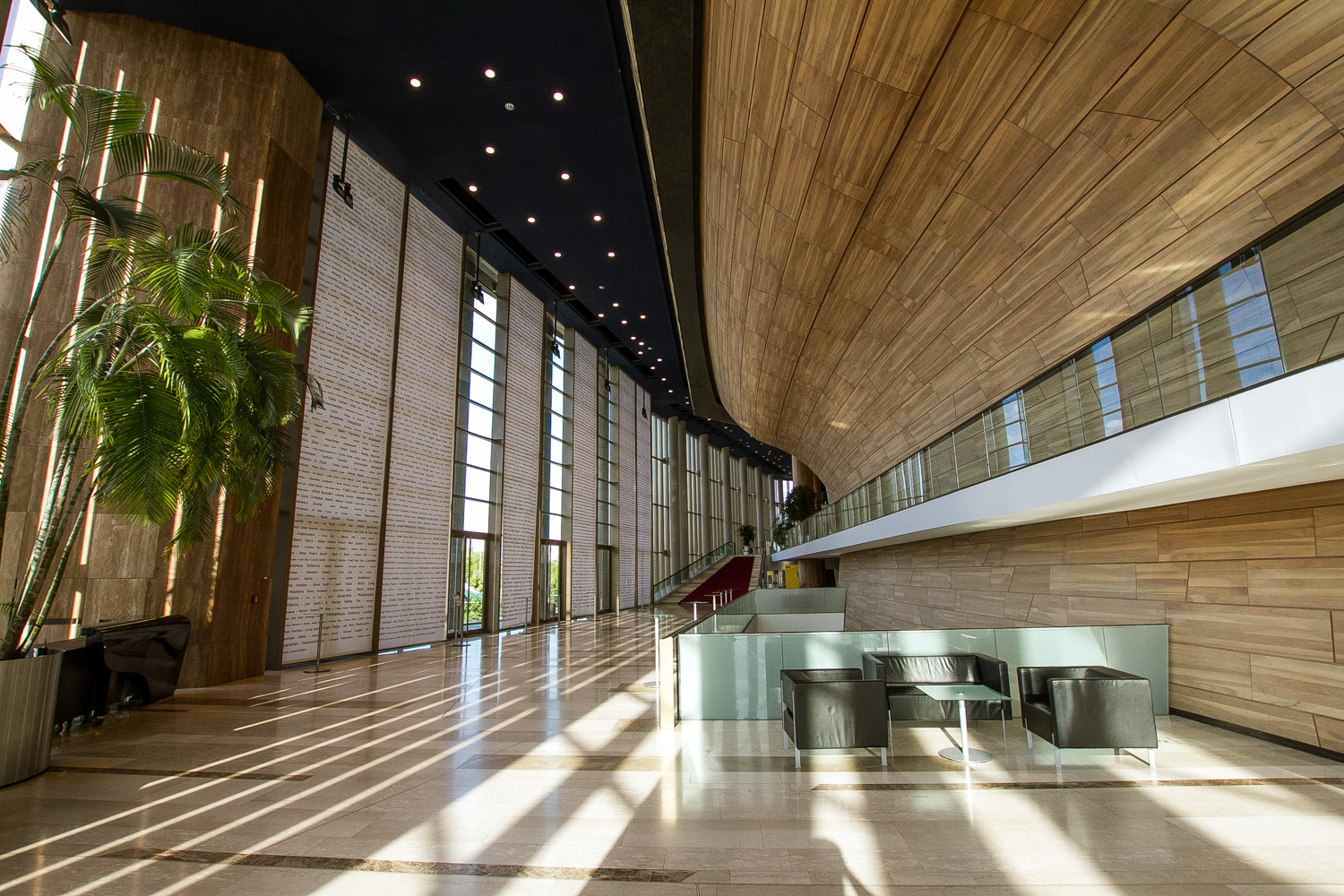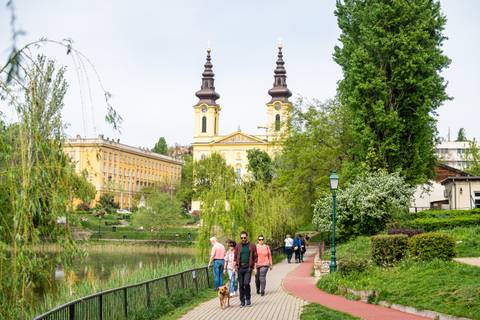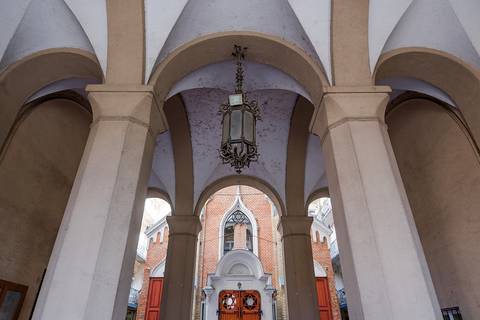The skies above Budapest are frequently sunny, but when it rains it can pour powerfully enough to intimidate city visitors from venturing outside to discover historic sights of Hungary’s capital. Fortunately, many fascinating Budapest landmarks feature cavernous indoor spaces to explore while taking shelter from rainy conditions, including diverse museums, a bustling market hall, a labyrinthine cave system, and more. Below we present Budapest’s ten best rainy-day destinations where visitors can admire monumental sights for many dry hours.
1/10
Millennium Underground
Budapest’s well-preserved Millennium Underground – Continental Europe’s first metro line, built in 1896 – is an inherently sheltered monument with its own museum, and it also happens to be a functioning form of transportation perfect for visiting varied indoor landmarks along its route. Vintage vehicles and public-transport relics fill the Millennium Metro Museum within a decommissioned subway tunnel under Deák tér; from here visitors can ride the yellow line’s venerable rails to visit historic sites such as the House of Terror Museum (by the Vörösmarty utca stop), the Kodály Memorial Museum (by the Kodály körönd stop), or the Ferenc Hopp Museum of Asiatic Arts (by the Bajza utca stop).
More details here.
2/10
Royal Palace
Looming majestically above Budapest’s riverfront skyline no matter how cloudy the skies may be, the green-domed Royal Palace is a gigantic monument housing two major museums that provide plenty of local and global treasures to examine under one regal roof. Most of this storied building is now the Hungarian National Gallery, presenting artworks by renowned Magyar visionaries in the permanent collection. The museum also hosts world-class temporary exhibitions, currently showcasing Budapest. The First Golden Age. Meanwhile, another palace wing contains the Budapest History Museum, displaying amazing artefacts from the Magyar metropolis dating back to ancient times.
More details here and here.
3/10
Great Market Hall
Beneath a beautiful rooftop of multicoloured Zsolnay tiles, Budapest’s 120-year-old Great Market Hall is still an integral food source for downtown residents who visit every morning to purchase fresh produce, meats, specialities and much more. Here gigantic skylights provide picture-perfect illumination come rain or shine, enhancing retro-styled stands that proffer varied vegetables, fruit, paprika strands, sausages and other regional delicacies. On the huge gallery level, booths present all sorts of traditional Hungarian handicrafts and kitschy souvenirs; this upstairs area also hosts a row of vendors cooking up quintessential Magyar treats such aslángos (fried-dough snack) and goulash soup.
More details here.
4/10
Hungarian National Museum
Centuries of Magyar history are on proud display at central Pest’s Hungarian National Museum, an imposing landmark that is a historic site in its own right – this is considered to be the launching point for Hungary’s 1848 Revolution, where rebellious poet Sándor Petőfi recited “The National Song” before a huge crowd gathered at the museum’s main stairway. Inside, this institution features relics ranging from Hungary’s millennium-old Coronation Mantle to ornately decorated rifles to aristocratic furniture to posters printed by Budapest’s freedom fighters during the 1956 Uprising against Soviet rule. The museum also hosts interesting temporary exhibitions and has a good gift shop.
More details here.
5/10
Kunsthalle
Creatively constructed to be Hungary’s grandest art-viewing hall during the height of Budapest’s Belle Époque, the spacious Kunsthalle (Műcsarnok to Hungarians) stands before Heroes’ Square with a colourful mosaic gracing its Greek Revival-style portico. Inside, historic and contemporary artworks of numerous genres shine under oversized skylights within the main display area, while smaller gallery spaces simultaneously present more edgy exhibitions.
More details here.
6/10
Parliament
Hungary’s humongous neo-Gothic Parliament building is a feast for the eyes inside and out, and when this riverfront government palace is not restricted to the public while official business is under way, regular tours offer access to see the many treasures within. The country’s most cherished relic – the 1,000-year-old Crown of St. Stephen, Hungary’s founding king – is on proud display beneath the Parliament dome. Other highlights include gorgeous stained-glass windows by renowned Belle-Époque artist Miksa Róth, dramatic historical depictions by some of Hungary’s greatest painters, and amazing structural details created by the Parliament building’s masterful architect, Imre Steindl.
More details here.
7/10
Gellért Baths
As the city of spas, Budapest has a variety of historic thermal baths full of eye-catching scenery, but Buda’s spacious Gellért Baths is the most renowned for its beautiful interior design. Opened in 1918, the Gellért is an Art Nouveau masterpiece. Its pools are surrounded by incredible artworks, including curvaceous Zsolnay-tile fixtures, fanciful stained-glass windows, intricate mosaics, and many other fascinating features for visitors to admire while relaxing as their muscles melt in the hot spring waters.
More details here.
8/10
Hospital in the Rock
Hidden beneath the fairy-tale streets of the Castle District, a sombre warren of subterranean chambers preserves evocative artefacts of Hungary’s violent 20th-century history. The Hospital in the Rock was originally built within natural underground caverns as a medical bunker at the outset of World War II, where hundreds of Budapest residents took shelter as the Red Army conquered Hungary’s capital. Not long afterwards, during the 1956 Revolution, Magyar freedom fighters relied on this cavernous clinic; later this was converted into a secret nuclear shelter during the Cold War. Today this is a public museum impervious to all weather conditions.
More details here.
9/10
Müpa Budapest
As a thoroughly modern cultural monument of the Magyar metropolis, the riverside Müpa (Palace of Arts) in southern Pest is only about a decade old, but this gigantic contemporary centre for world-class creativity features enough indoor attractions to spend an entire day here. This is the location of multiple performance venues – including the huge Bartók Béla National Concert Hall, with capacity for over 1,600 spectators– as well as the multi-storey Ludwig Museum, featuring modern-art masterpieces by intriguing visionaries from Hungary and beyond. Müpa also hosts frequent events for children, while the gift shop here is an excellent source for tasteful Budapest souvenirs.
More details here.
10/10
Pál-völgyi Cave
Brave the elements during a short trip into the Buda Hills to enjoy a dry underground excursion into the depths of Pál-völgyi Cave. Here geological adventures await everyone within fascinating interconnected caverns where the sun never shines. Regular English-language tours are offered in three caves. Upon joining, you can marvel at enchanting rock formations and crystals alongside numerous stalactites and stalagmites. There is another more adventurous tour featuring an undeveloped subterranean playground for amateur spelunkers to crawl, climb and slide their way through (which you can book here).
More details here.














